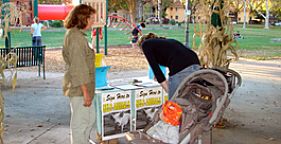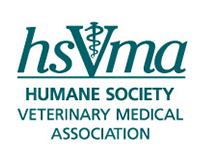HSVMA Veterinarians Assist with California Ballot Initiative to Aid Farm AnimalsJuly 11, 2008 Members of the Humane Society Veterinary Medical Association (HSVMA) have added a professional veterinary voice to the team of volunteers working to pass the Prevention of Farm Animal Cruelty Act, a ballot initiative that will be put before California voters in November. This historic initiative seeks to require that farm animals who are housed in the most intensive confinement systems—egg-laying hens, breeding sows, and calves used in veal production—be given enough space to be able to turn around, lie down comfortably, stand up, and stretch their limbs.  HSVMA member Barbara Hodges collects signatures to qualify California's Prevention of Farm Animal Cruelty Act for the November ballot. Pam Runquist/HSVMA Several HSVMA veterinary volunteers were on the front lines during the signature-gathering phase of the ballot campaign, helping gather the approximately 800,000 signatures needed from registered California voters to qualify for the ballot. They were joined by several veterinary students from University of California Davis and Western University of Health Sciences, who volunteered their evenings and weekends to gather signatures at farmer’s markets, shopping centers, and other public venues. Once the signatures were collected and the initiative qualified for the ballot, HSVMA veterinarians stepped up participation by publicly endorsing the initiative and soliciting other endorsements from their veterinary colleagues. Some veterinarians have written letters, some have made phone calls, and others have volunteered to speak to their local veterinary medical association to solicit support. “Veterinary endorsement is critical for the campaign,” said HSVMA Director of Veterinary Advocacy Pam Runquist. “The public looks to the veterinary profession for leadership on animal protection issues and will respect the veterinary position on the initiative. In fact, many veterinarians are reporting that their clients are asking them for information and their opinion about the issue when they frequent their clinics.” |
